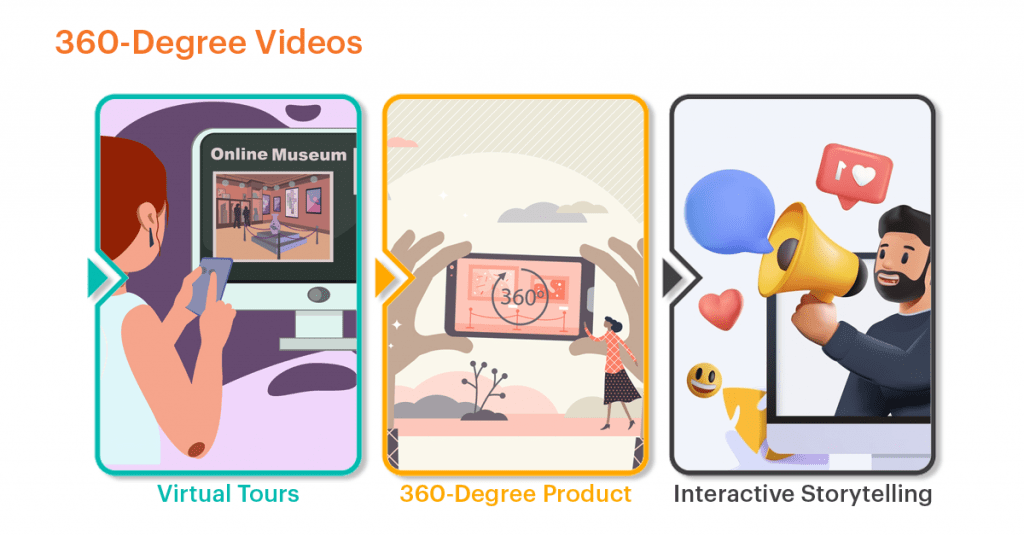Interactive video ads are revolutionizing the way brands connect with audiences. These ads let viewers interact with the content, creating a more engaging and personalized experience. As traditional ads lose their impact, Interactive Video Ads provide a dynamic solution that captures attention and boosts results. This innovative approach is quickly becoming essential for brands looking to make a lasting impression in the digital world.
What Is An Interactive Video Ad?
Interactive video advertisements are designed to engage viewers interactively, involving features such as polls, forms, and links.
These features offer more functions than just the play/pause/rewind controls available for standard video.
More impressive interactive features of an interactive video enable the viewers to have a different experience from the content presented within the ads, making it more memorable and further achieving better and more powerful brand connections.
Advertisers are increasingly using interactive videos because they offer many novel benefits over traditional video advertisements.
Some studies even point out that interactive videos actually outperform their conventional counterparts in terms of audience interactions and ad completion rates.
Many industry experts see interactive videos as a trend of popularity, especially on streaming and social media sites.
How Does Interactive Video Ad works?
There are many types of interactive ads. Some are simple, such as call-to-action overlays at a specific moment within the video ad. Others have been quite complex and evolved from this sort of ‘Playable’ Video Ad, depending on the user’s choice.
Lately, technology gains with VR, AR, and 360-degree videos have really expanded the opportunity for running interactive ads, allowing advertisers to create unique ads that really drive more viewer participation.

Different protocols and systems are being developed to support interactive video development. Various publishing platforms are constantly upgrading to support the latest interactive media technologies.
Facebook supports 360-degree videos, and live streaming has become interactive with various applications like Twitch, Instagram, and Twitter’s Periscope.
The Interactive Advertising Bureau (IAB) is significant when discussing advertising. Through IAB, the VPAID API has allowed developers to integrate interactive features that work with all video players. Consequently, deploying an ad that uses interactive videos has become more accessible, more scalable, and less expensive.
How can Interactive Advertisements Benefit you?
Interactive advertisements have numerous advantages for advertisers, especially in today’s online media market.
Industry research has found more strength in interactive video over conventional video in several key areas. A 2023 study found that interactive video ads continue to outperform standard video ads significantly. According to the IAB, interactive video ads now boast a 90% completion rate, compared to 80% for standard video ads. This improvement highlights the growing value of interactive content in capturing viewer engagement.
Furthermore, the IAB’s latest benchmarks show that video ads featuring any form of viewer interaction consistently deliver better results across all performance measures
The same reports indicated that, compared to non-interactive ads, interactive videos received over six times the number of user interactions.
In a hyper-competitive digital advertising market, interactive video ads are one way of making brands stand out from others and leave a lasting impression on their targeted viewers.
Captivating interactions through interactive elements can increase viewer involvement and, therefore, the effectiveness of the ads. It could also open up the potential for more innovative ad design.
It can also permit interaction with the ad and collect, most importantly, data from the viewers. With many engagement opportunities and interactive ads, more diverse data may be collected than with other types of ads, which may include data derived from overlay questionnaires or behavioral preferences from in-advertiser options.
The data can help advertisers improve their ads. Interactive video ads can convert viewers into leads or clients much more effectively than traditional content types, thereby resulting in even greater returns on investment.
Challenges of Interactive Ads
However, they do have many advantages. Interactive advertisements aren’t free of issues because of the rapid technological advancements in videos and digital media.
The shift from Flash to HTML5 and JavaScript that was initiated by Chrome stopping its support for Flash and JavaScript and JavaScript, has caused problems with compatibility, despite using the VPAID API which is a standard.
The transition from Flash to HTML5 for multimedia interactive content has progressed significantly, with HTML5 now dominating the digital video infrastructure. Despite initial challenges, this shift has led to more seamless ad experiences across devices and platforms, as HTML5 eliminates the need for browser plug-ins and supports a wider range of ad formats.
Additionally, the increasing usage of mobile devices poses specific challenges for advertisers. The differences between mobile and desktop in terms of size make it difficult for desktop-designed advertisements to be converted to mobile devices. Contrary to desktop-centric interactive video systems and mobile-specific interactive videos, mobile-specific infrastructure is still being developed.
Interactive Video Advertisements are a major improvement in advertising, resulting in increased viewer engagement, a faster rate of completion, and efficient data collection. Even though there are a few challenges with regard to technological advances or mobile-based platforms, the benefits of interactive video ads can make them an effective marketing tool that will leave lasting impressions even in the digital age.

